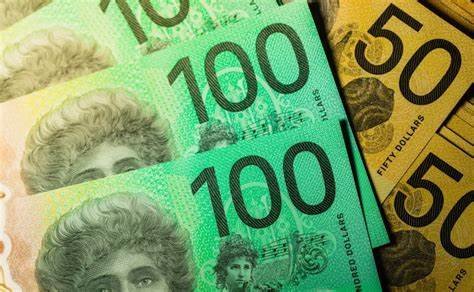Australian Dollar Rises as Ceasefire Expectations and Confident China Data Lift Risk Mood
Australian Dollar rallied as positive risk mood emerged from possible ceasefire negotiations between Israel and Hamas amid ongoing tensions in the Middle East with rocket exchanges between Iran and Israel. Optimistic economic readings from Australia’s most important trading partner, China, further supported the AUD, as Retail Sales exceeded forecasts at 6.4% year-on-year in May. While the US Dollar dipped after mixed economic data involving below-forecast Producer Price Index (PPI) growth and increase in consumer sentiment, the AUD/USD currency pair has a bullish trend inside an uptrend channel, but is near-term capped by resistance at 0.6495, with firmer barriers at recent highs, while risks are lower if levels of support get breached. KEY LOOKOUTS • Ongoing negotiations between Israel and Hamas for a hostage release may result in a short-term ceasefire, boosting global risk sentiment and favoring the Australian Dollar. • Better-than-anticipated Retail Sales expansion in China to 6.4% YoY paints a favorable picture for Australia’s export-oriented economy, although uncertainties are in place due to possible trade policy changes. • Ongoing Iranian-Israeli missile exchanges maintain geopolitical risks in a heightened state, which can affect safe-haven flows and currency market volatility. • Weaker US PPI and improving consumer sentiment are likely to impact the Federal Reserve’s future rate decisions, with markets presently pricing in a future rate cut within a month. Australian Dollar is supported by improving global risk sentiment as fresh optimism for a ceasefire in Israel-Hamas conflict continues with tensions in the Middle East. Strong economic news from China, Australia’s key trade partner, also supports the Aussie, with Retail Sales in May coming in stronger than predicted at 6.4% year-over-year. Meanwhile, the US Dollar fell slightly following mixed economic data, such as softer-than-anticipated Producer Price Index (PPI) data and an improvement in consumer sentiment, affecting market sentiment regarding potential Federal Reserve interest rate cuts later this year. Even with the positive backdrop, geopolitical tensions and future US monetary policy actions remain a challenge for the AUD/USD pair. Australian Dollar finds support on improving risk mood fueled by prospects of possible ceasefire negotiations between Israel and Hamas. Sustained Chinese Retail Sales strength adds to the momentum for the Aussie, although mixed US economic data deters the US Dollar. Nevertheless, middle-east tension and looming Fed actions retain market uncertainty. • Australian Dollar rallies on improved risk mood on expectations of ceasefire negotiations between Israel and Hamas. • China’s Retail Sales increased 6.4% YoY in May, topping consensus and underpinning Australia’s trade outlook. • Middle East tensions continue, with Iran and Israel trading missile strikes in defiance of international appeals for diplomacy. • US Dollar tumbles as the Producer Price Index (PPI) and core PPI were softer than anticipated. • US Consumer Sentiment Index climbed to 60.5 in June, above the predicted 53.5. • Federal Reserve is likely to leave interest rates steady but could reduce rates by 25 basis points through September. • Technical picture for AUD/USD remains positive within the uptrend channel, with resistance at 0.6495 and support at 0.6470. The Australian Dollar is strengthening as world risk mood improves, mainly due to the advancement of ceasefire talks between Israel and Hamas. In spite of the continued hostilities, the likelihood of a temporary ceasefire has given financial markets a reprieve. Nevertheless, tensions continue to run high as Iran and Israel keep on trading missile attacks with each other, threatening wider regional stability. The crisis has attracted international attention, and the calls for diplomacy have grown louder as casualties mount on either side. AUD/USD DAILY PRICE CHART SOURCE: TradingView Another source of bullishness for the Australian Dollar is the recent announcement of better-than-forecast economic indicators from China, one of Australia’s most important trading partners. China’s Retail Sales rose 6.4% year-on-year in May, beating market forecasts and prior levels, marking robust domestic demand. At the same time, Industrial Production registered moderate expansion, boding well for a steady but conservative economic pace. These advancements combined with conflicting economic indications from the United States have provoked investors to adjust their anticipations regarding future Federal Reserve policy measures. TECHNICAL ANALYSIS AUD/USD pair maintains a positive bias since it remains trading within a rising channel on the daily chart. The 14-day Relative Strength Index (RSI) is slightly above the middleline at 50, pointing towards weak bullish momentum. Near-term resistance is close to the nine-day Exponential Moving Average (EMA) at 0.6495, and additional resistance sits at the recent seven-month high of 0.6538. Support on the downside is the lower end of the bullish channel at approximately 0.6470, and a fall below here may undermine the bullish thesis with further losses towards the 50-day EMA at 0.6425. FORECAST If upbeat risk sentiment prevails, boosted by advancements in Israel-Hamas ceasefire negotiations and robust Chinese economic statistics, the AUD/USD currency pair might extend its upside through the near-term resistance at 0.6495. A continuous move upwards could then aim at the recent seven-month peak of 0.6538, and if bullish momentum intensifies, the pair might target the eight-month high of about 0.6687, then the upper side of the rising channel at 0.6730. To the negative, increased geopolitical tensions in the Middle East or any unforeseen slump in world risk appetite may pressure the AUD/USD pair. A fall below the 0.6470 support level, which is the lower boundary of the ascending channel, could induce further selling. In that event, the pair may retest the 50-day EMA at 0.6425, with further downside risks extending to the 0.6380 area should bearish sentiment intensify.



